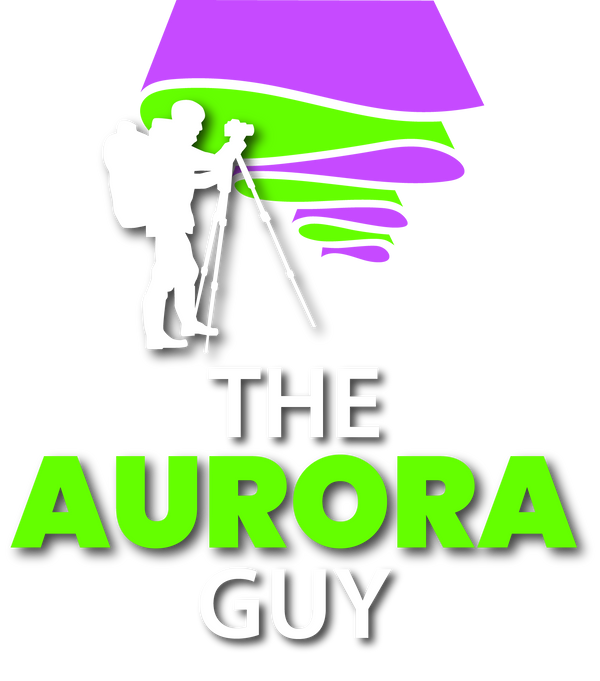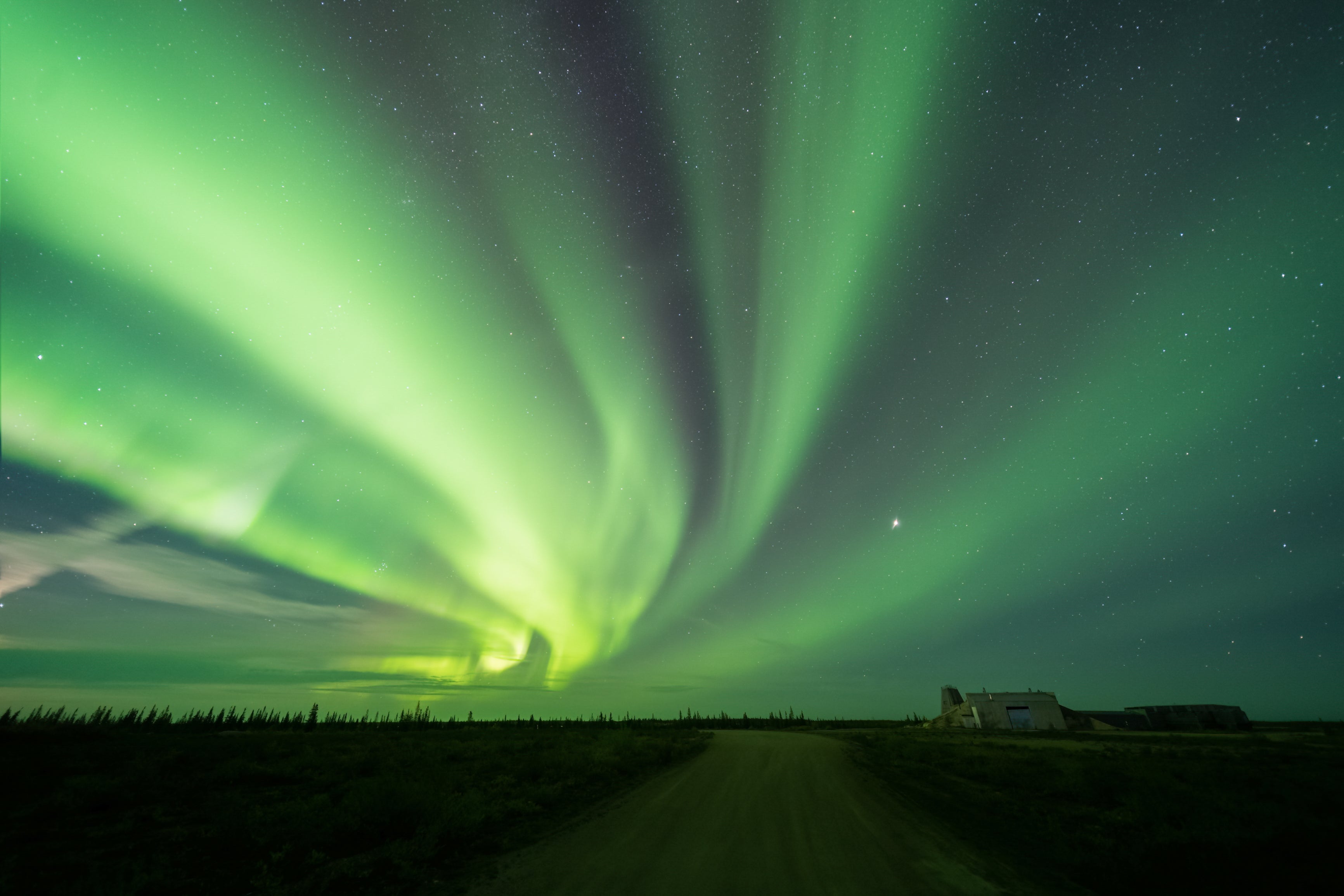
Frequently Asked Questions about the Aurora
I've received thousands of DMs and emails over the years with people asking about aurora chasing and photography. Here are the most common questions I get with their answers.
Aurora Chasing FAQs
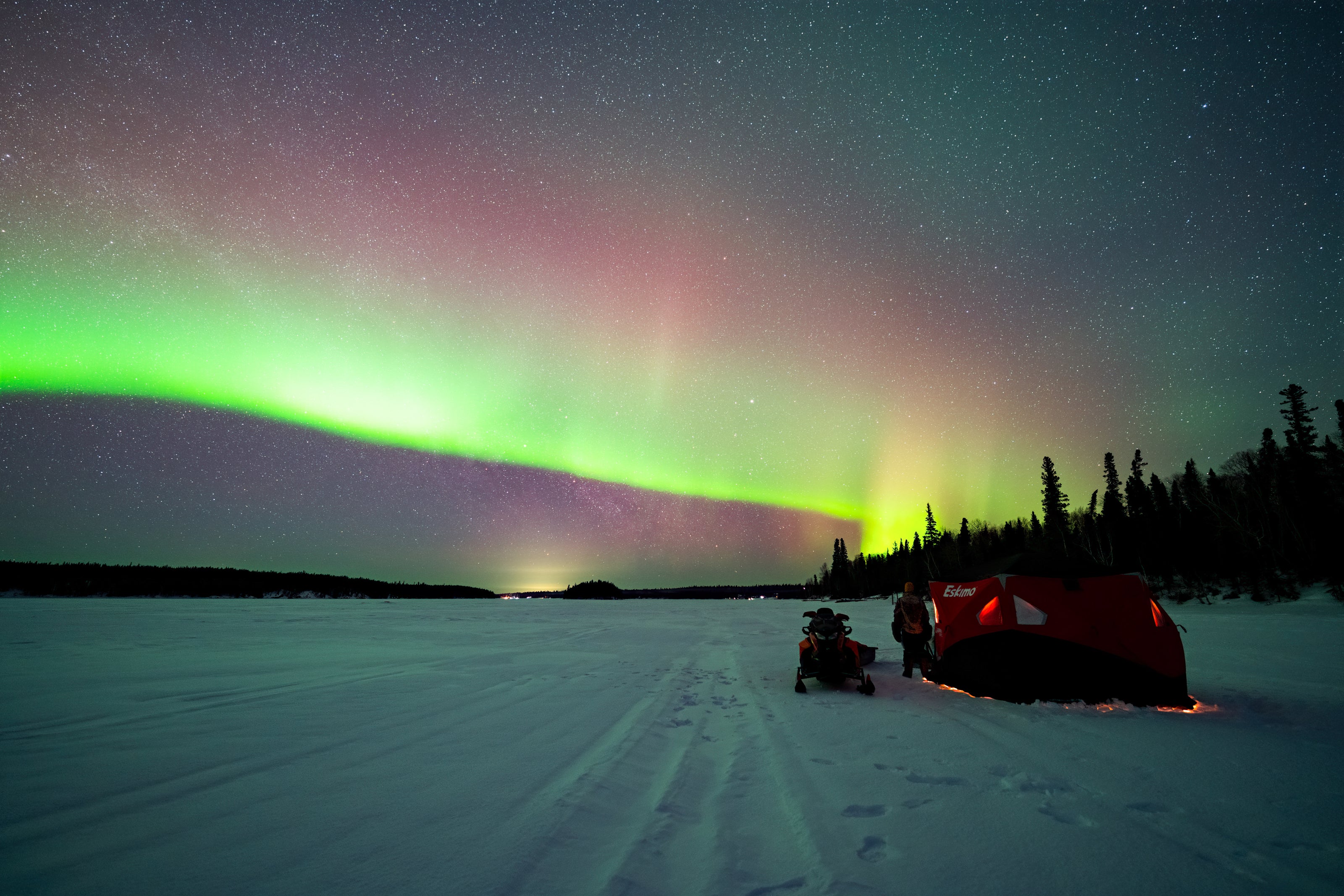
What is the best place in the world to see the northern lights?
The best place in the world to see the aurora is somewhere in the "auroral oval." The auroral oval is a doughnut of aurora that forms around Earth's geomagnetic poles every night. The auroral ovals grow bigger with enhanced geomagnetic activity and smaller with weaker activity. Under the auroral oval, you will see aurora overhead. Some locations underneath the auroral ovals are Tromsø, Yellowknife, Churchill, Reykjavik, Fairbanks, Rovaniemi, and Abisko.
What is the best time of the year to see the northern lights?
The aurora can only be seen at night. In the Arctic, it is too bright at night to see aurora in the summer. Aurora "season" lasts from mid-September to mid-April in northern Norway, Sweden, and Finland. In Alaska and Iceland, you might get an extra two weeks or so (early September to late April). In Yellowknife you get another couple weeks, and in Churchill, the aurora season lasts from mid-August to mid-May. The closer you are to the north and south poles, the more extreme the daylight and darkness are in the summer and winter, respectively, and that's why aurora season is shorter in the extreme Arctic.
The aurora can also only be seen during clear nights since it occurs high up in the sky above where clouds usually are. This means that picking a historically clear month wherever you are going is good. For example, in Fairbanks, March and September are the clearest months (usually not cloudy). November, on the other hand, is very cloudy. Since there's no way to know what the weather will be months in advance when you plan on traveling, I recommend giving yourself the best shot and booking a trip during a clear month.
September and March are also months with higher auroral activity due to a scientific phenomenon known as the "Russell-McPherron effect." This just means that around the equinoxes, the aurora is strongest.
September in the Arctic is a great month to travel, too, because it isn't cold yet. If you can't handle extremely cold temperatures or don't have winter driving experience, I recommend traveling for auroras in September.
What is the best time of the night to see the northern lights?
The best time of the night to see auroras is from 11 pm to 3 am. Even if it is dark, the auroras are strongest around the dead of night when the auroral oval is directly overhead. This surprises travelers visiting Arctic locations in the winter, since while it may be fully dark at 4 pm, the aurora still won't appear until 10 or 11 pm, usually. During high geomagnetic activity, the aurora usually makes an appearance earlier in the night, and peak activity may be shifted two or three hours earlier.
What are some good aurora chasing locations near Fairbanks, Alaska?
Check out my e-book on my top aurora chasing locations in Fairbanks, Alaska, but some of my favorite spots are Olnes Pond, Ballaine Rd, Nordale Rd, and Chena Hot Springs. I have more information on these locations and even better spots listed in my e-book!
I want to see the aurora. How do I start planning a trip?
First, decide where and when you want to go. Take into account travel costs, how you will get around where you are staying, how close you will be to the auroral oval, how cold it will be, and what other activities there are to do in the area. Then, I would recommend booking an AirBnB or hotel out of town away from city lights and renting a car. You can also hire a private tour guide. I also recommend staying at least a week if you want the best chances of seeing the aurora since cloud cover and geomagnetic activity can be unpredictable.
What is the best app to use for predicting where the aurora will be?
I don't recommend using any aurora forecasting apps. All the apps present the same data in a different way, either with more colorful text or a skin that looks nicer. Some of the apps attempt to use their own methods to "predict" the aurora, but most if not all have no scientific basis in their guesses. The only "apps" I use are SpaceWeatherLive (SWL) and Aurorasaurus. SWL gives you all the official data sources from NOAA, NASA, and other organizations in an honest way. Aurorasaurus is a NASA citizen science project that crowdsources aurora sightings to show you where aurora is actually being seen. Sometimes real-life reports and space weather data aren't 100% lined up.
Do auroras make a sound?
It's unclear. While there is no scientific evidence of auroras making sounds, many people living under the auroral oval report having heard the aurora before. I have never heard the aurora despite seeing it hundreds of times.
Is a full moon or a new moon better for aurora chasing?
A full moon is better for viewing the aurora since it allows you to see more colors at night. A full moon will also cause fainter auroras to become less visible, though. However, I think the color of the aurora is more impressive than seeing every detail. For photography, it really depends, but I prefer a new moon since the aurora turns the landscape green in photos, which looks cool. Under a full moon, night photos look like they were taken in the daytime in long exposures.
How does the naked-eye view of the aurora compare to a camera?
The aurora looks much brighter and more colorful on a camera than to the eye. This is because our eyes suck at seeing in extreme low light. On my Instagram, I have a blog article that explains this concept more in-depth.
How is the aurora formed?
The aurora is formed by the interaction of charged particles from outer space penetrating our atmosphere and reacting with gases (nitrogen and oxygen). The different colors in the aurora are produced by different gases at different altitudes. Solar activity and space weather can enhance the auroras and cause geomagnetic storms which cause the auroral ovals to expand to lower latitudes.
Aurora Photography FAQs
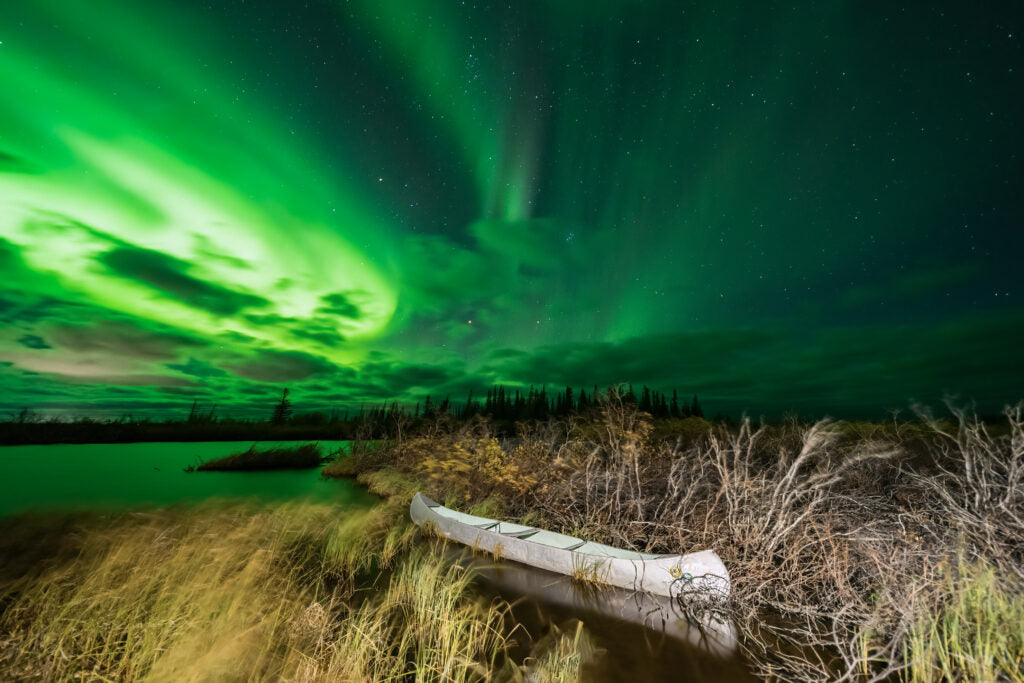
What camera do I need to photograph the aurora?
Really, all you need to photograph the aurora is a smartphone. However, a professional DSLR/mirrorless camera, high-quality lens, tripod, and the right knowledge about how to set up the shot and editing will always result in a better photo. I recommend buying a used full-frame mirrorless camera for aurora photography. Some good models include the Canon 6D (budget), Canon EOS R (entry-level), Sony a7 iii (mid range), or Sony a7r iv (top-tier). Really, any camera with a manual mode can take great pictures of the aurora. I am biased to cameras I have experience with, but all camera brands produce good products. There are differences, but in the grand scheme of things, they are small.
What is a timelapse and how can I create one of the aurora?
A timelapse is a video that shows time moving faster than reality. If you took a video with your phone and sped it up, that's technically a timelapse. A series of photos taken in a row can also be stitched together to create a timelapse since videos are just series of images played quickly (usually 24, 30, or 60 frames per second). The photo timelapse method is used frequently by nature photographers to show the movement of clouds, waves, stars, or anything else. Timelapse shows how the world evolves over time.
Aurora timelapse photography is my bread and butter - I love how timelapse shows how the aurora moves and dances across the sky. To create an aurora timelapse, you need a camera that can shoot a timelapse. Many smartphones have this feature, but professional DSLR/mirrorless cameras can also do this. You may need to buy a device called an "intervalometer" that lets you automatically take pictures.
Once you have an image sequence, you can edit the photos as normal and combine them to form a movie using software like Adobe After Effects.
What do I need to take video of the aurora?
Taking videos of the aurora is possible with many modern smartphones, especially the newer iPhone models. For the best results, make sure to lower your video resolution from 4k to 1080p and decrease the frame rate to 30 fps or 24 fps. This will let more light into the camera. However, some professional cameras like the Sony a7s series can take extremely clean videos of the aurora, even when it is not super bright. I use the Sony a7s iii. It is one of the best consumer-grade low-light video cameras. If you are using a professional camera, the lens you use matters a lot when taking video, since light gathering is extremely important. A 35 mm f/1.4 or 24 mm f/1.4 lens is the sweet spot for aurora videography. I personally use the Laowa Argus 35 mm f/0.95 lens since it has an extremely large aperture (front opening) to let in tons of light into my camera.
What is the best lens for aurora photography?
For aurora photography, you will want a wide-angle, wide-aperture lens. Wide apertures (low f-numbers) mean the lens will let in lots of light. Look for lenses with f-numbers less than 2.8 (e.g., f/2.8, f/2.0, f/1.8, f/1.4). Wide angle lenses (focal length of 35 mm or less) are also important for capturing a wide view of the sky and landscape. The aurora often fills the entire sky, so having a lens that can capture a super wide field of view is nice to have. Unfortunately, you can't just pick up any lens that is wide-angle and wide-aperture. It is hard to manufacture these lenses, and many of them are not sharp and have defects when they're used at their widest apertures. Some of these defects include "coma," "spherical aberrations," and "astigmatism." Make sure to read lens reviews to see which models correct for these aberrations the best.
These are the lenses I use (all Sony E-Mount):
- Laowa 12 mm f/2.8 Zero-D
- Sigma 14 mm f/1.4 ART
- Sony 14 mm f/1.8 GM
- Sony 20 mm f/1.8 G
- Sony 35 mm f/1.4 GM
- Laowa Argus 35 mm f/0.95
They are all fantastic and top-of-the-line.
What camera settings should I use for aurora photography?
A full guide to aurora photography (including gear, camera settings, and editing tips) can be found in my e-book!
First, make sure you are using manual focus and manual white balance. Shoot in RAW picture mode. Use manual mode with auto ISO. You have two settings to change now. For aperture, use your lowest f-number. For shutter speed, if the aurora is not active take the number 400 and divide it by your lens' focal length. This number will be your shutter speed. For example, with a 15 mm lens, I would use a 26-second shutter speed. Since my camera doesn't have an option for 26 seconds, I would just set it to 20. When in doubt, round down, not up. The reason is that any shutter speed longer than 26 seconds (in my case) will result in star trailing, which is bad. If the aurora is active, you want to use a shorter shutter speed to get more details in the sky. A shutter speed that is too long will blur the aurora and cause it to smear. I usually shoot my auroras with a 8-second shutter speed, and when it's super active, I will use a 3.2-second shutter speed. Since we are using auto ISO, you don't need to worry about adjusting this setting. The camera will control it for you.
On a smartphone, you may not have this level of control, but it's good to use a long exposure and your phone's built-in night mode. Some phone cameras have a "pro mode" that will allow you to freely change the aforementioned settings.
What is the best way to edit an aurora photo?
There is no "right" way to edit a photo, but I would avoid using too much saturation. While many people on social media like over-saturated aurora photos, the aurora chasing community knows better and prefers more natural edits.
I use Adobe Lightroom Classic to edit all my aurora photos, and I usually create a subtle S-shape with the tone curve, raise the exposure until my histogram is centered, and add a bit of dehaze and saturation to enhance contrast. The adage "less is more" rings true in photo editing.
How do I keep my camera from dying in the cold?
I have three pieces of advice. First, buy a battery grip for your camera. This will allow you to use two batteries instead of one, greatly extending the total battery life of your setup. Second, it helps to rubber-band a hand warmer to the body of your camera. This will keep the internal components warm. I find that this works in moderately-cold settings, between 30 and 0 F (0 to -20 C). In extremely cold environments, hand warmers die quickly when exposed to cold air. My strategy when it's extremely cold is to carry many camera batteries and keep all the fully-charged batteries in one coat pocket, and as batteries die, put the dead batteries in another pocket. Both pockets will have handwarmers inside. Many times, camera batteries "die" but actually have charge left in them. The handwarmers warm up the "dead" batteries and give them a bit of extra life.
How do I prevent my lens from frosting up in the cold?
This happens when it is cold and humid. Lenses with large glass front elements will attract ice crystals. I recommend either rubber-banding a handwarmer to your lens or using a dedicated powered lens heater. They are also sometimes called "dew heaters."
Do I need a full-frame camera for aurora photography?
No. Crop-sensor (smaller than full-frame) cameras can do fine. Full-frame cameras are generally better for low-light photography, though.
Do I need a tripod?
Yes. You will need a tripod for any kind of long exposure photography. The heavier and wider-basesd, the better. Don't cheap out on a tripod. Also, some gear does not work in the cold. I use Benro Carbon-Fiber tripods with their quick-action ball heads. They work great, even down to -40 temps.
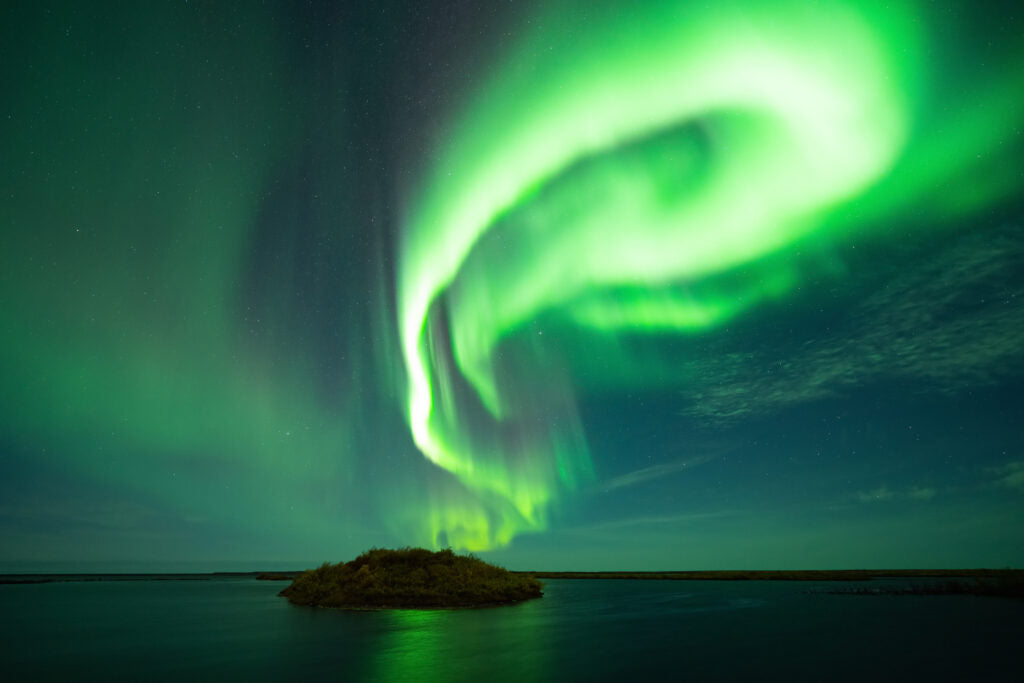
-
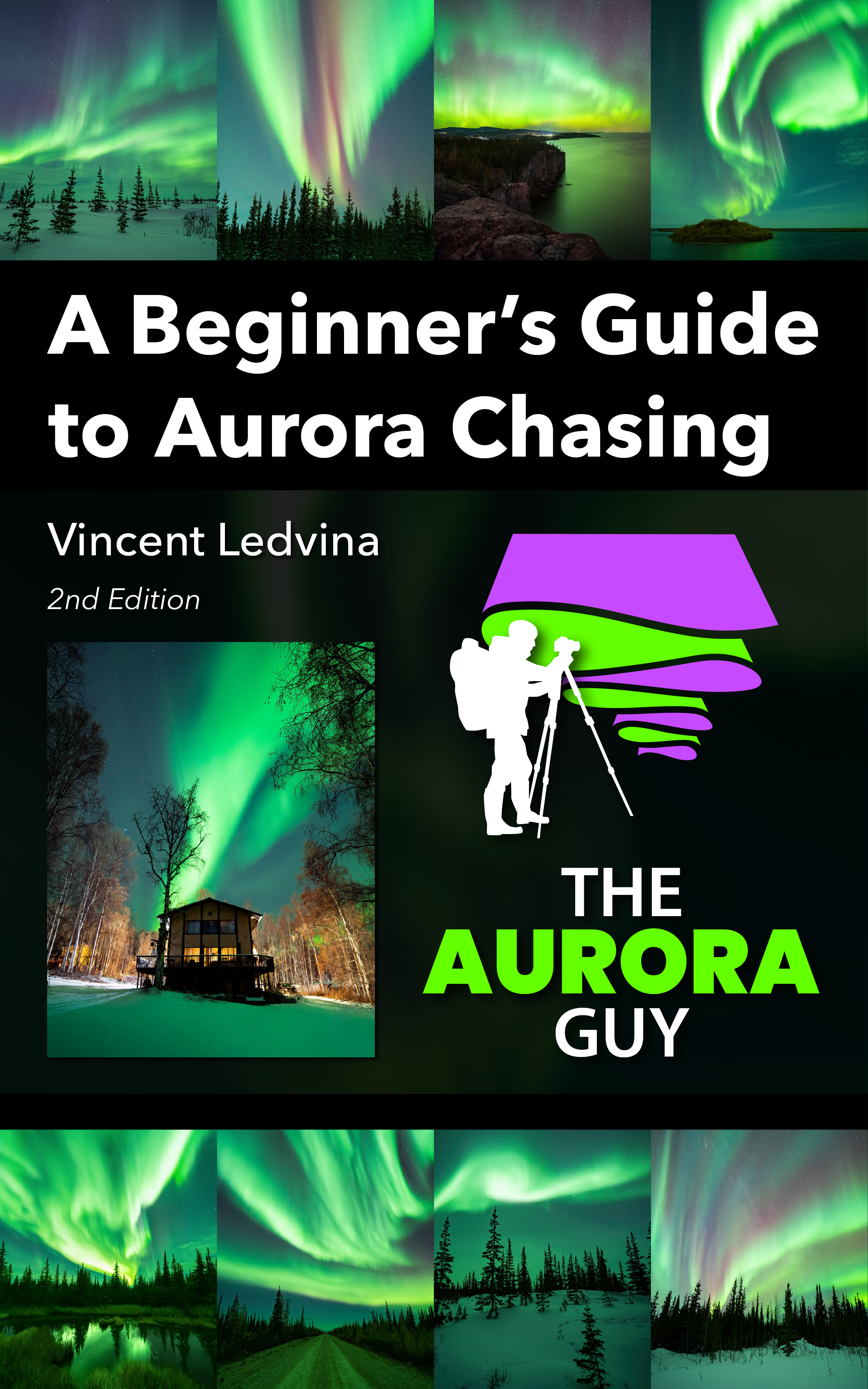
My most popular e-book with 7000+ downloads
ShopThis e-book contains everything you need to know about aurora at a beginner to intermediate level! You can get this book for free by signing up for my emails.
-
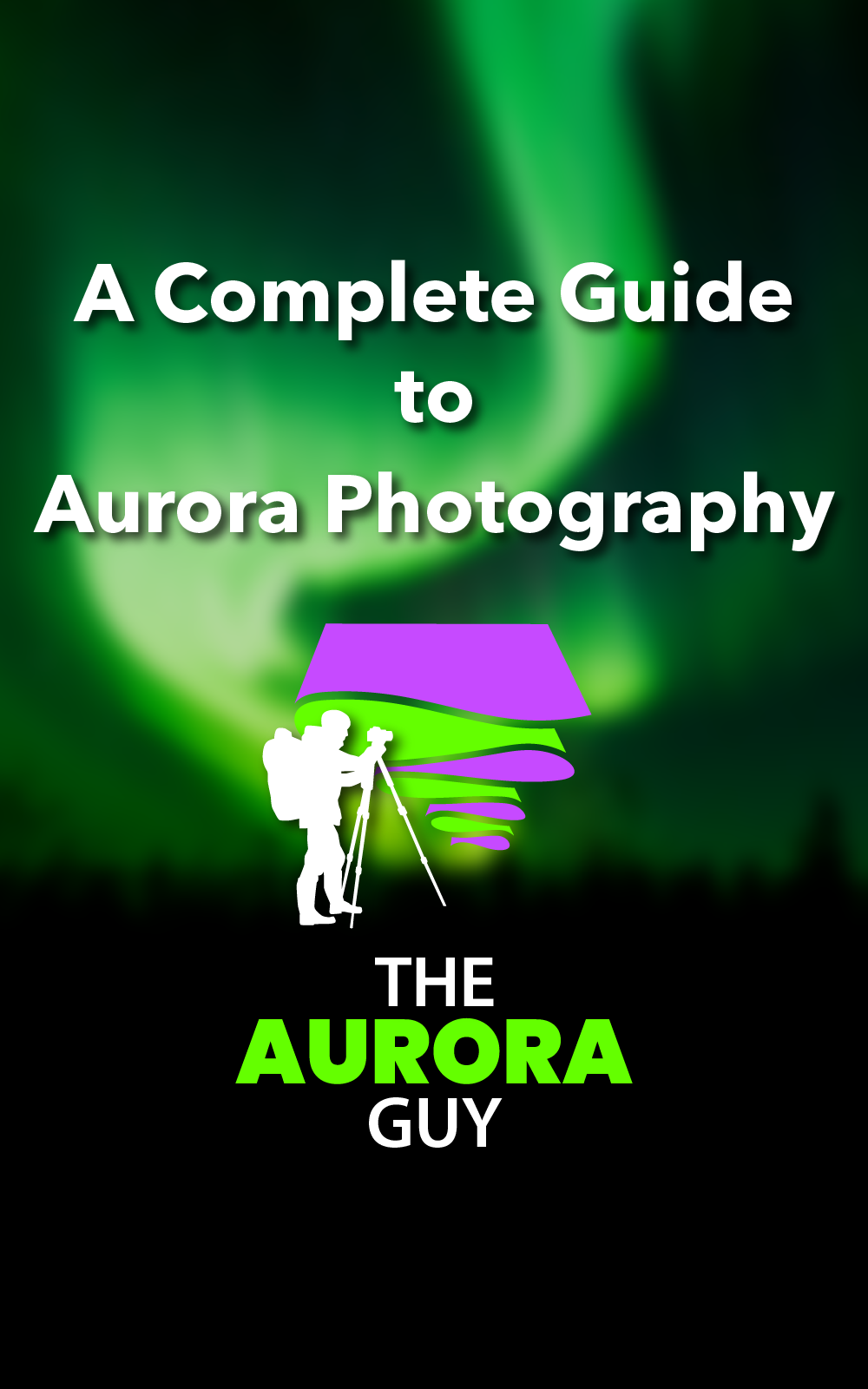
Become a master at photographing the aurora
ShopFrom gear to settings to editing, this e-book will teach you how to create stunning photos of the aurora whether you just have a smartphone or you're a pro.
-
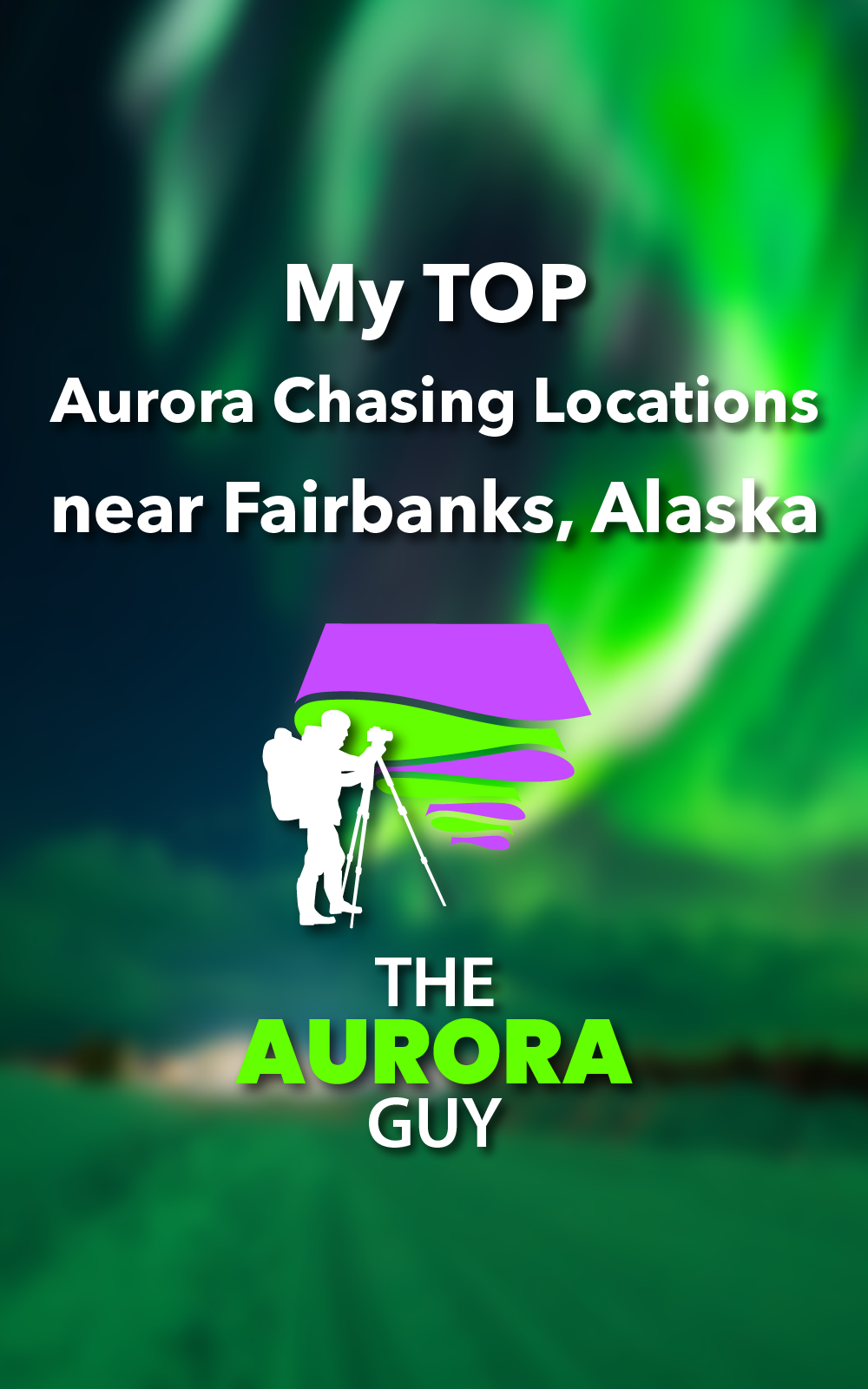
Insider information on Fairbanks' best aurora chasing locations!
ShopDiscover the hidden gems of Fairbanks and learn to avoid tourist-trap areas. I have you covered in with this e-book!
